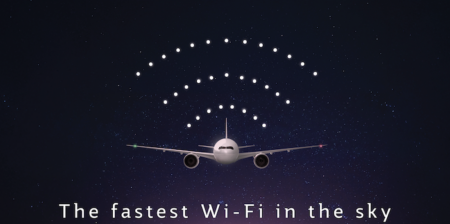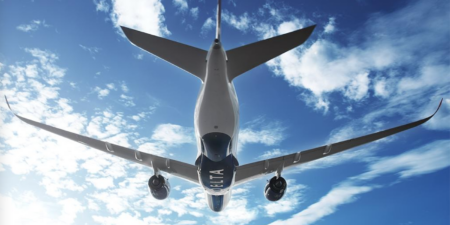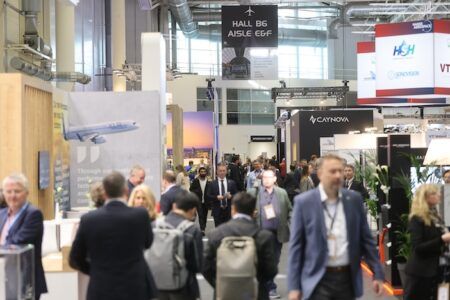For the second of this three-part series in the run up to Farnborough Airshow, I will explore how the rise of connectivity has inspired a range of technologies that will dominate proceedings at this year’s event. Technology is fundamentally shifting the way that the entire aerospace industry is operating, and the interiors segment is no exception. These are the three technologies that I think are set to have the greatest impact:
Predictive maintenance
There is more computing power on a modern aircraft than in an average organization. Vast volumes of data are being processed in the industry, and while transferring data from airborne aircraft remains costly, we’re getting closer to being able to download all that is needed from planes in flight mode. This has the potential to be huge for the industry, as engineers could be aware of the maintenance requirements for a particular aircraft before it has even touched the ground, drastically reducing costly AOG time.
With rapid advancements being made in data and data analytics, it’s a truly exciting time to be working in the industry. Soon, thousands of sensors will be embedded in each aircraft, allowing data to be streamed down to the ground in real-time. And who knows, in time, this could drive the famous black box to simply become a backup device.
At Farnborough Airshow, we expect to see lots of demos of connected applications, as OEMs increasingly look to secure greater visibility of the performance of parts and components along the supply chain. Advancements in this area have also given rise to a greater demand for data scientists, and companies at the show will be eager to position themselves as leaders in the field to attract the best and brightest talent.
Virtual reality (VR)
Farnborough will also be abuzz with the latest innovations and advancements in virtual reality technologies. New approaches to in-flight entertainment will certainly be on the agenda, but there are also very exciting developments from an MRO and supply chain perspective.
So how would this work in practice? Smart glasses worn by engineers working on engines could be used to transmit images of the aircraft to maintenance specialists for assessment, and immediate consultancy could be given. In turn, information could be fed straight back to the engineer on the ground in real-time. The capabilities of hands-free smart glasses also allow for all this data to be recorded in order to assess further issues down the line.
This technology could drive huge improvements in efficiencies and safety and reduce human error. For instance, Honeywell’s technicians have been using voice recognition software when stripping down turbine engines and APUs for overhaul leaving them able to enter engine data hands-free. It has the potential to reduce the complexity and workload for operators and as a result, uptake of this very powerful tool is only going to increase.
Wi-i connectivity
British Airways’ recent GB£30m retrofit investment is a sign of great things to come in aircraft wi-fi. Next-generation satellite technology will facilitate never before seen levels of connectivity in the skies. But while IAG plans to have 90% of its long-haul fleet up and running with wi-fi by 2019, the question still remains for medium and short-haul flights.
Nevertheless, airlines are starting to explore how they can monetize new internet services, and at Farnborough, we’ll see many exhibitors demonstrating the industry’s latest approaches to full in-flight connectivity through apps, security protocols and multimedia platforms.
The former is potentially the most exciting custom-built airline apps. Some carriers only currently allow their customers to interact with entertainment platforms, essentially using their tablet or iPhone as a second screen. But others offer a much deeper integration into the in-flight experience, via the passenger’s personal device. The apps can be used for things like ordering food and drink and calling the attention of a flight attendant. Run via a subscription-based model, they also provide opportunities for airlines to generate further revenue and would benefit hugely from the integration of high-speed wi-fi-enabled services.
The rise in connectivity, big data and the Internet of Things has had a transformative impact on the aerospace sector; and disruptive technologies across areas like predictive maintenance, virtual reality and wi-fi are starting to take a more prominent place in the industry. It will be fascinating to see how these developments play out on the floors of Farnborough stay tuned to find out more!
About Tom Edwards
Tom Edwards is president of North America operations and aerospace at Cyient. He joined Cyient (then Infotech) in 2010, assuming responsibility for sales and relationships at its largest customer, United Technologies Corporation. In 2013, Edwards was named president of Cyient North America, where he maintains responsibility for UTC and for Cyient’s North American operations.
Prior to Cyient, Edwards had a 26-year sales career at IBM, where he rose to global channel sales leader in the system technology division, responsible for innovative programs designed to accelerate the sale of complex data storage systems through IBM’s industry resellers.
Edwards graduated from Clarkson University in Potsdam, NY, with degrees in management and marketing. He now serves on the Town of New Fairfield Board of Finance an elected position in New Fairfield, Connecticut.




